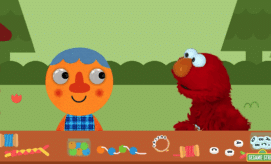Recycled water bottles are one of the most popular recycled items in preschool classrooms. For infants and toddlers, clear, plastic water bottles can be filled with different items (such as beads, uncooked beans and rice, buttons, etc.), to make shakers or discovery bottles. An example of these bottles can be seen in the image to the right. Click here for detailed instructions as well as ideas for items to put inside the bottles. For older children, plastic bottles can be used for crafts, projects, and even science experiments.
Larger plastic bottles (such as 2-liter bottles of soda) are the perfect size for growing plants and creating mini-ecosystems, through which children can observe how plants grow and interact with soil, oxygen, and water. Click here to find detailed instructions for creating a terrarium out of recycled bottles with the children in your classroom.
Bottle Caps














